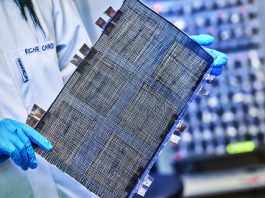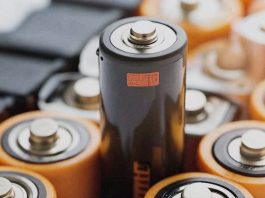As the global demand for lithium-ion batteries (LIBs) increases pressures on critical raw material supply chains, researchers are on the hunt for affordable, safe, and sustainable alternatives.
Aqueous zinc-ion batteries (AZIBs) are emerging as a promising solution, offering a low-cost option derived from abundant resources.
Scientists at Flinders University are now pioneering efforts to develop practical polymer-based AZIBs using organic cathodes, marking a significant step toward sustainable energy storage.
Why aqueous zinc-ion batteries are the future
The search for alternatives to lithium-ion batteries is intensifying due to various issues, such as the scarcity of raw materials and supply chain disruptions.
Aqueous zinc-ion batteries could address these challenges by leveraging zinc, a material far more abundant than lithium. Zinc is ten times more plentiful in the Earth’s crust, making it an attractive, sustainable option for energy storage.
“Aqueous zinc-ion batteries could have real-world applications,” says Associate Professor Zhongfan Jia, a nanotechnology expert at Flinders University’s College of Science and Engineering.
AZIBs could revolutionise industries from electric vehicles to portable electronics, offering a viable and eco-friendly alternative to lithium-ion batteries.
Environmental and economic benefits
Beyond their resource availability, AZIBs offer several advantages over their lithium-based counterparts.
Unlike lithium-ion batteries, which often rely on rare and expensive materials like cobalt, AZIBs use zinc—a cheaper and more environmentally friendly alternative. Zinc is also less toxic and safer, further enhancing its appeal for widespread adoption.
Another critical advantage lies in the environmental impact. The improper disposal of lithium-ion batteries has resulted in significant environmental risks, with millions of spent batteries contributing to hazardous waste.
AZIBs, being less toxic, could mitigate these risks and help reduce the environmental footprint of energy storage technologies.
The challenge of developing high-performance cathodes
While AZIBs hold tremendous potential, a major challenge remains: developing high-performance cathodes.
Most AZIBs use zinc metal as an anode, but the cathode material, whether inorganic or organic, plays a crucial role in determining the battery’s efficiency and lifespan.
To address this issue, Jia’s team has made groundbreaking strides. Their research focuses on improving conductivity using nitroxide radical polymer cathodes made from cost-effective, commercial polymers.
The researchers developed a prototype lab-made pouch battery using scalable and affordable materials.
The battery utilised a non-fluoro zinc electrolyte and BP 2000 carbon black to deliver an impressive capacity of nearly 70 mAh g-1 with a stable discharge voltage of 1.4 V.
This innovation, which can power small devices such as electric fans and model cars, demonstrates the practical potential of AZIBs for everyday use.
The road ahead for aqueous zinc-ion batteries
Aqueous zinc-ion batteries present a promising, eco-friendly, and cost-effective solution to the energy storage challenges of the future.
With continued advancements in polymer-based cathodes and battery performance optimisation, AZIBs could soon replace lithium-ion batteries across various applications, from electric vehicles to consumer electronics.









